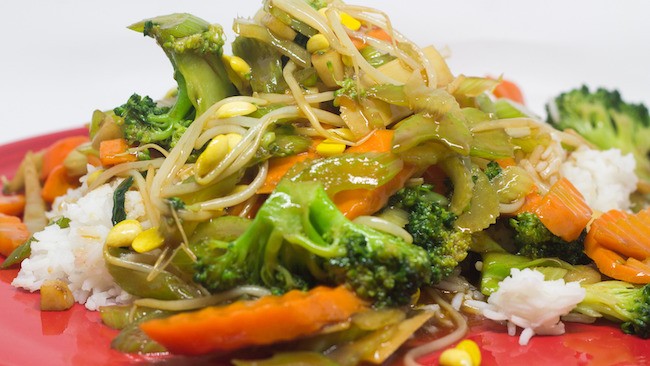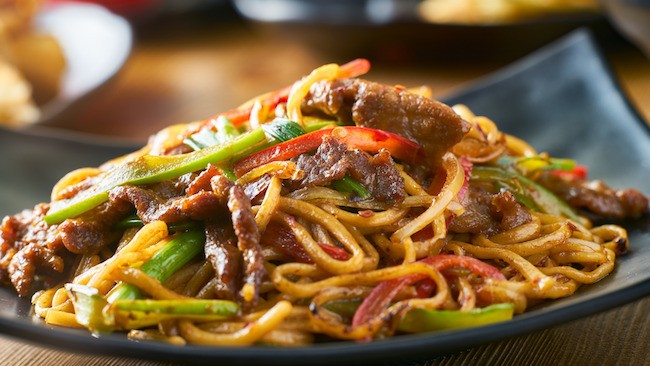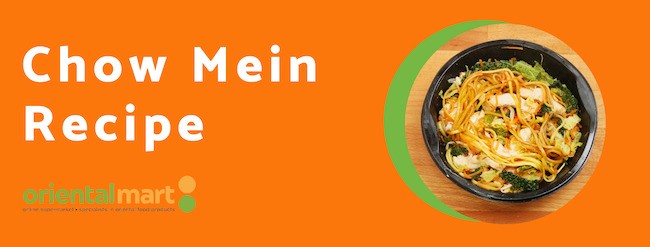What Is In A Chop Suey? Chop suey is a versatile and popular Chinese-American dish, and at WHAT.EDU.VN, we’re here to break down its components and origins. If you’re curious about the diverse ingredients and variations of this classic dish, read on to discover everything about chop suey, from its history to its delicious flavor profile, and explore other Asian cuisine staples like Chinese takeout and the best Asian dishes.
1. Exploring the Essence: What Is in a Chop Suey?
Chop suey is a dish known for its adaptability and fusion of flavors. It typically includes a mix of meat (like chicken, pork, beef, or shrimp), an assortment of vegetables (such as bean sprouts, cabbage, and celery), and a savory sauce, often served over rice or noodles. The exact ingredients can vary widely depending on regional preferences and available ingredients.
1.1 A Culinary Melting Pot
Chop suey’s charm lies in its flexibility. It’s a dish that welcomes improvisation, making it a great way to use leftover ingredients creatively.
- Meat Options: Chicken, pork, beef, and shrimp are commonly used, providing a protein-rich base.
- Vegetable Medley: Bean sprouts, cabbage, celery, onions, bell peppers, and water chestnuts contribute to the dish’s texture and nutritional value.
- Savory Sauce: A blend of soy sauce, oyster sauce, and cornstarch creates a thick, flavorful sauce that binds the ingredients together.
1.2 Key Ingredients and Their Roles
Each ingredient in chop suey plays a unique role in creating the overall taste and texture.
| Ingredient | Role |
|---|---|
| Meat | Provides protein and a savory flavor base |
| Bean Sprouts | Add a crunchy texture and fresh taste |
| Cabbage | Offers a mild, slightly sweet flavor and crispness |
| Celery | Contributes a subtle, refreshing crunch |
| Onions | Infuse a pungent, aromatic depth |
| Bell Peppers | Add color and a slightly sweet, tangy flavor |
| Water Chestnuts | Provide a unique, crisp texture and subtle sweetness |
| Soy Sauce | Imparts a salty, umami-rich flavor |
| Oyster Sauce | Enhances the savory profile with a hint of sweetness |
| Cornstarch | Thickens the sauce, giving it a glossy, appealing finish |



2. Delving into the History of Chop Suey
The origins of chop suey are debated, but it is widely believed to be a Chinese-American creation. Several stories recount its invention, often involving resourceful Chinese chefs adapting to American tastes and available ingredients.
2.1 The Tales of Origin
One popular story suggests that chop suey was created in the late 19th century by a Chinese chef in San Francisco who needed to quickly prepare a meal for a group of hungry miners using whatever ingredients were on hand. Another tale claims that it was invented for a visiting Chinese diplomat who wanted a dish that catered to American palates.
2.2 Etymological Roots
The name “chop suey” is derived from the Cantonese phrase “tsap sui,” meaning “miscellaneous leftovers” or “odds and ends.” This name reflects the dish’s nature as a culinary creation that utilizes a variety of available ingredients.
2.3 Chop Suey’s Rise to Popularity
Chop suey gained popularity in the United States during the late 19th and early 20th centuries, becoming a staple in Chinese-American restaurants. Its affordability and adaptability made it a hit with diverse populations.
3. Chop Suey vs. Chow Mein: Unraveling the Differences
Chop suey and chow mein are often mistaken for each other, but they are distinct dishes with unique characteristics. The primary difference lies in the preparation and serving of the noodles.
3.1 Key Distinctions
| Feature | Chop Suey | Chow Mein |
|---|---|---|
| Noodles | Served on the side or mixed in, often with rice as an alternative | Stir-fried with the other ingredients, creating a cohesive dish |
| Sauce | Typically thicker and starchier | Thinner, soy sauce-based |
| Preparation | Ingredients cooked separately and combined at the end | All ingredients stir-fried together in one pan |
| Overall Texture | More saucy and less integrated | More integrated and slightly crispy |
3.2 Noodle Integration
In chow mein, the noodles are stir-fried with the other ingredients, allowing them to absorb the flavors of the sauce and develop a slightly crispy texture. In chop suey, the noodles (or rice) are often served separately, with the saucy mixture spooned over the top.
3.3 Sauce Consistency
Chop suey typically features a thicker, starchier sauce, while chow mein is characterized by a thinner, soy sauce-based sauce. This difference in sauce consistency contributes to the distinct textures and flavors of the two dishes.
4. Crafting Your Own Chop Suey: A Step-by-Step Recipe
Creating your own chop suey at home is a fun and rewarding culinary experience. This recipe provides a basic framework that you can customize to your liking.
4.1 Gathering Your Ingredients
- 1 pound of your choice of meat (chicken, pork, beef, or shrimp), thinly sliced
- 1 tablespoon vegetable oil
- 1 clove garlic, minced
- 1/2 onion, chopped
- 1 carrot, sliced
- 1 cup sliced mushrooms
- 1 cup bean sprouts
- 1 cup chopped cabbage
- 1/2 cup chopped celery
- 1/4 cup soy sauce
- 2 tablespoons oyster sauce
- 1 tablespoon cornstarch
- 1 cup chicken broth or water
- Cooked rice or noodles for serving
4.2 Preparing the Sauce
In a small bowl, whisk together the soy sauce, oyster sauce, cornstarch, and chicken broth or water until smooth. Set aside.
4.3 Stir-Frying the Ingredients
- Heat the vegetable oil in a large wok or skillet over medium-high heat.
- Add the meat and stir-fry until cooked through. Remove the meat from the wok and set aside.
- Add the garlic and onion to the wok and stir-fry until fragrant, about 1 minute.
- Add the carrot, mushrooms, bean sprouts, cabbage, and celery to the wok and stir-fry until the vegetables are tender-crisp, about 5-7 minutes.
- Return the cooked meat to the wok.
- Pour the prepared sauce over the ingredients and stir-fry until the sauce thickens, about 1-2 minutes.
4.4 Serving Your Chop Suey
Serve the chop suey hot over cooked rice or noodles. Garnish with chopped green onions or sesame seeds, if desired.
4.5 Tips for Customization
- Vegetarian Option: Substitute tofu or tempeh for the meat.
- Spice it Up: Add a pinch of red pepper flakes or a dash of chili oil for extra heat.
- Add Texture: Include water chestnuts or bamboo shoots for a crunchy element.
5. Variations of Chop Suey Around the World
Chop suey has evolved and adapted to local tastes and ingredients in different parts of the world.
5.1 Regional Adaptations
- American Chop Suey: This version often includes ground beef, macaroni pasta, and a tomato-based sauce.
- Canadian Chop Suey: Similar to the American version, it may include ground beef, pasta, and a tomato-based sauce, but often with a sweeter flavor profile.
- Filipino Chop Suey: This variation features a colorful mix of vegetables, meat (often pork or chicken), and a thick, savory sauce, often served with rice.
5.2 Cultural Influences
The variations in chop suey recipes reflect the diverse culinary influences and preferences of different cultures. These adaptations demonstrate the dish’s versatility and its ability to be tailored to local tastes.
6. Nutritional Benefits of Chop Suey
Chop suey can be a nutritious meal, providing a balance of protein, carbohydrates, and vitamins, depending on the ingredients used.
6.1 Macronutrient Breakdown
- Protein: Meat provides essential amino acids necessary for muscle building and repair.
- Carbohydrates: Rice or noodles offer energy to fuel your body.
- Fats: The oil used in stir-frying contributes to the overall fat content.
6.2 Micronutrient Profile
The vegetables in chop suey are rich in vitamins and minerals, including:
- Vitamin C: Supports immune function and acts as an antioxidant.
- Vitamin A: Important for vision, immune function, and skin health.
- Potassium: Helps regulate blood pressure and supports nerve and muscle function.
- Fiber: Promotes digestive health and helps regulate blood sugar levels.
6.3 Health Considerations
While chop suey can be a healthy meal, it’s important to be mindful of the sodium content, especially from soy sauce and oyster sauce. Opting for low-sodium versions of these sauces can help reduce the overall sodium content. Additionally, choosing lean meats and loading up on vegetables can further enhance the nutritional value of the dish.
7. Pairing Chop Suey with Complementary Dishes
Chop suey can be enjoyed as a standalone meal or paired with other dishes to create a complete and satisfying dining experience.
7.1 Appetizer Suggestions
- Spring Rolls: Crispy spring rolls filled with vegetables and meat make a delightful appetizer.
- Wonton Soup: A light and flavorful wonton soup can cleanse the palate before the main course.
7.2 Side Dish Ideas
- Steamed Broccoli: A simple side of steamed broccoli adds extra nutrients and fiber to the meal.
- Garlic Green Beans: Stir-fried green beans with garlic provide a flavorful and texturally interesting side dish.
7.3 Beverage Pairings
- Green Tea: A classic choice, green tea complements the flavors of chop suey and aids digestion.
- Light Beer: A crisp, light beer can provide a refreshing contrast to the savory flavors of the dish.
8. Finding the Best Chop Suey Near You
If you’re craving chop suey but don’t want to cook, there are several ways to find the best chop suey near you.
8.1 Online Search
Use online search engines like Google or Yelp to search for “Chinese restaurants near me” or “chop suey delivery.”
8.2 Review Websites
Check out review websites like TripAdvisor or Zomato to read reviews and ratings of local Chinese restaurants.
8.3 Recommendations from Friends
Ask friends, family, or coworkers for their recommendations on the best places to get chop suey in your area.
9. Chop Suey in Pop Culture: Its Enduring Appeal
Chop suey has made its mark in popular culture, appearing in movies, television shows, and literature. Its presence reflects its enduring appeal and its status as a cultural icon.
9.1 Chop Suey in Film and Television
Chop suey has been featured in numerous films and television shows, often as a symbol of Chinese-American cuisine or as a quick and affordable meal option.
9.2 Chop Suey in Literature
Chop suey has also appeared in literature, often as a metaphor for cultural fusion or as a representation of the immigrant experience.
9.3 Chop Suey as a Cultural Icon
Chop suey’s widespread recognition and its presence in popular culture have solidified its status as a cultural icon, representing the blending of Chinese and American culinary traditions.
10. Frequently Asked Questions About Chop Suey
Here are some frequently asked questions about chop suey, providing quick answers to common queries.
10.1 What is the origin of chop suey?
Chop suey is believed to be a Chinese-American dish, likely created in the United States in the late 19th or early 20th century.
10.2 What are the main ingredients in chop suey?
The main ingredients in chop suey typically include meat (such as chicken, pork, beef, or shrimp), vegetables (such as bean sprouts, cabbage, and celery), and a savory sauce.
10.3 How is chop suey different from chow mein?
The main difference between chop suey and chow mein is that chop suey is often served with the noodles or rice on the side, while chow mein involves stir-frying the noodles with the other ingredients.
10.4 Is chop suey a healthy dish?
Chop suey can be a healthy dish, providing a balance of protein, carbohydrates, and vitamins, depending on the ingredients used.
10.5 Can I make chop suey at home?
Yes, you can easily make chop suey at home using a variety of ingredients and your favorite seasonings.
10.6 What kind of sauce is used in chop suey?
The sauce used in chop suey is typically a savory blend of soy sauce, oyster sauce, cornstarch, and chicken broth or water.
10.7 What are some variations of chop suey?
Some variations of chop suey include American chop suey (with ground beef and macaroni pasta), Canadian chop suey, and Filipino chop suey.
10.8 Can I make a vegetarian version of chop suey?
Yes, you can make a vegetarian version of chop suey by substituting tofu or tempeh for the meat.
10.9 What are some good side dishes to serve with chop suey?
Some good side dishes to serve with chop suey include spring rolls, wonton soup, steamed broccoli, and garlic green beans.
10.10 Where can I find the best chop suey near me?
You can find the best chop suey near you by searching online, checking review websites, or asking for recommendations from friends and family.
Unlock a World of Answers with WHAT.EDU.VN
Do you have more questions about chop suey, other culinary delights, or anything else that sparks your curiosity? Don’t hesitate! At WHAT.EDU.VN, we provide a platform where you can ask any question and receive fast, reliable, and free answers. Our community of experts is ready to share their knowledge and insights on a wide range of topics.
Ready to get started? Visit WHAT.EDU.VN today and ask your question.
Address: 888 Question City Plaza, Seattle, WA 98101, United States
Whatsapp: +1 (206) 555-7890
Website: WHAT.EDU.VN
Let what.edu.vn be your go-to resource for all your questions. From unraveling the mysteries of chop suey to exploring the depths of scientific discoveries, we’re here to provide you with the answers you seek.
